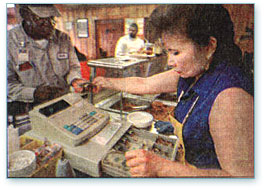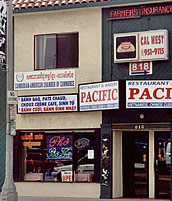 Over the years, some first and second-generation Southeast Asian Americans have gained economic stability. Some have been able to purchase homes in urban and suburban areas by pooling incomes, combining multiple families in one residence, and being frugal. They also use their earnings to send their children to college with the expectation that they will thereby have greater economic opportunities. Over the years, some first and second-generation Southeast Asian Americans have gained economic stability. Some have been able to purchase homes in urban and suburban areas by pooling incomes, combining multiple families in one residence, and being frugal. They also use their earnings to send their children to college with the expectation that they will thereby have greater economic opportunities.
Struggling Against Poverty
Individuals and families from all three countries, along with ethnic groups such as the Hmong and Iu-Mien, were self-sufficient farmers who had no experience with wage labor in their homelands. They still sometimes face high levels of poverty. This means that they live in high crime and polluted areas, lack proper physical and mental health care, and have few educational and economic opportunities that could enable mobility. Some Southeast Asian Americans work several jobs in order to make ends meet, giving them little time with their families. Those with modest means may hunt, fish, and establish backyard gardens where they grow vegetables and fruits, all in an effort to supplement their family’s food supply.
Southeast Asians who are veterans of the Vietnam War, especially those who directly supported the U.S. war effort, have sometimes struggled to gain access to U.S. government services for veterans. Many spent their younger years as soldiers and then were imprisoned. As a result they sometimes suffer chronic health problems, making it difficult to find employment. Many survive on disability services and other public assistance programs and hope that their children will have better futures.
Continued on page 2 |
<< Back |
[1] 2 |
Next >> |
|


 Over the years, some first and second-generation Southeast Asian Americans have gained economic stability. Some have been able to purchase homes in urban and suburban areas by pooling incomes, combining multiple families in one residence, and being frugal. They also use their earnings to send their children to college with the expectation that they will thereby have greater economic opportunities.
Over the years, some first and second-generation Southeast Asian Americans have gained economic stability. Some have been able to purchase homes in urban and suburban areas by pooling incomes, combining multiple families in one residence, and being frugal. They also use their earnings to send their children to college with the expectation that they will thereby have greater economic opportunities.